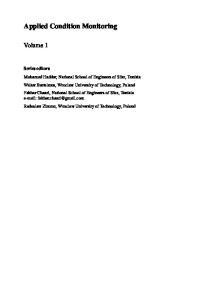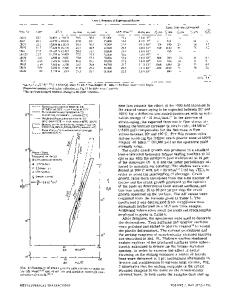Fatigue Crack Growth on Heterogeneous Stress Fields: Best Analytical Approach
- PDF / 1,871,498 Bytes
- 11 Pages / 612 x 792 pts (letter) Page_size
- 14 Downloads / 363 Views
Fatigue Crack Growth on Heterogeneous Stress Fields: Best Analytical Approach Antonio Martin-Meizoso1, Jose M. Martinez-Esnaola1, Asier Bergara1 and Shaun Falconer2 1 CEIT and Tecnun (University of Navarra), Manuel Lardizábal, 15, 20018 San Sebastián, Spain. 2 University of Glasgow, Department of Mechanical Engineering, James Watt (South) Building, Glasgow, G12 GQQ, United Kingdom. ABSTRACT A way of estimating Stress Intensity Factors is proposed by extending available solutions (solid and crack configurations) to stress fields not considered in available formulations. The accuracy of the proposed estimation is considered with respect to fatigue life assessment and crack shape tracing. It is aimed as very fast initial estimation, in comparison with the use of Finite Elements, in those cases were a high stress gradient is observed: stress concentrations (holes, notches, grooves) or due to surface residual stresses produced by machining techniques or induced –on purpose- to improve fatigue life (for example, by shot-peening), where no SIF solutions are available. INTRODUCTION Analytical formulations for the computation of Stress Intensity Factors (SIFs) are much faster than calculations by other numerical or experimental procedures. On the other hand the number of available crack configurations with an analytical solution for the SIFs is limited to usually very simple geometries and solid configurations. In most practical situations, the desired SIF is not found in any of the standard SIF handbooks [1-10]. Usually a very small crack (in comparison with the size of the solid) can be assumed or a simple approach is good enough for the intended engineering purpose. The same argument applies with the stress fields that are usually limited to a uniform stress perpendicular to the crack, a simple bending moment, uniform shear... In only some few cases [11-13] more complex stress distributions are considered, for example, a 3rd degree polynomial. Unfortunately cracks tend to nucleate at stress concentrations such as corners, grooves, notches and holes, producing a stress field with a large gradient. Moreover residual stresses are present, very frequently introduced on purpose (for example, by shot peening) in order to increase the component life in fatigue. So no analytical solution can be found for these most common of cases. THEORY The superposition principle, in the frame of Linear Elastic Fracture Mechanics (LEFM), is used to move the loads from the external boundary of the solid to crack surfaces. It basically states that the stress fields present in the absence of the crack can be used to compute the applied SIFs (the region of this stress fields that now cannot be carried from one crack surface to the other is used as the only applied loads), as sketched in figure 1.
Cracked solid with loads .
Sewed solid with loads
Cracked solid without loads and a negative sew.
Figure 1. Superposition principle, as used in Linear Elastic Fracture Mechanics. Note that the stress distribution on the uncracked ligament is singular
Data Loading...










